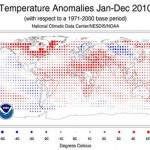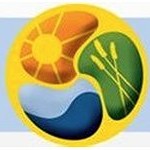 Washington – The Mekong River is one of the largest international rivers in the world with significant biodiversity. The catchment of the Mekong comprises 795,000 square kilometers, and the river stretches nearly 5,000 kilometers from the Tibetan Plateau to its southern most point at the Mekong Delta, ranking as the 21st largest river basin worldwide. It is a precious resource of significant socio-economic and cultural value. At present much of the population in the region still lives under the poverty line and relies mainly on the exploitation of the natural resources of the Mekong and its tributaries for basic food security and livelihood.
Washington – The Mekong River is one of the largest international rivers in the world with significant biodiversity. The catchment of the Mekong comprises 795,000 square kilometers, and the river stretches nearly 5,000 kilometers from the Tibetan Plateau to its southern most point at the Mekong Delta, ranking as the 21st largest river basin worldwide. It is a precious resource of significant socio-economic and cultural value. At present much of the population in the region still lives under the poverty line and relies mainly on the exploitation of the natural resources of the Mekong and its tributaries for basic food security and livelihood.
Integrated Water Resource Management (IWRM) in the Mekong River Basin is at critical juncture, mainly because of the growing pressure for increased utilization of water resources to sustain regional economic growth. To implement IWRM in practice, it is an urgent task to strengthen countries’ capacity in river basin management. Having adequate institutional and human resources at the national level will be critical to implementing IWRM effectively.
The Mekong Integrated Water Resource Management (MIWRM) Project, newly approved by the World Bank’s Board of Directors, follows on the Mekong Water Resources Assistance Strategy, developed jointly with the Asian Development Bank in 2006. It is also a follow-up to a Water Utilization Project, funded by the Global Environment Facilities supporting the Mekong River Commission (MRC) and contributing to more sustainable river basin development in the Lower Mekong Basin (LMB) through supporting the implementation of the IWRM at the regional, national and sub-national level.
The MIWRM comprises the following three main components:
(a) the Regional Water Resource Management to be implemented by the MRC, aiming at developing technical dialogues among the LMB countries to address key trans-boundary water resources management issues in the Lower Mekong Basin and establish common approach for disaster risk management;
(b) the Natural Water Resource Management to be implemented by Lao PDR, designed to strengthen policy, and institutional and human resources capacity in Lao PDR to improve water resource planning; and
(c) the Floodplain and Aquatic Resources Management to be implemented by Lao PDR, aimed at helping to achieve a difficult balance between livelihood support for the local communities, while also enhancing regional biodiversity in wetlands and increasing sustainability of fisheries in the Southern Lao PDR.
Project implementation period will be 6 years.
Over the course of its implementation, the Mekong Integrated Water Resource Management Project is expected to serve as a key example of how to implement quality, integrated water management practices in the Lower Mekong Basin at the regional, national and sub-national levels.
Source: The World Bank.














